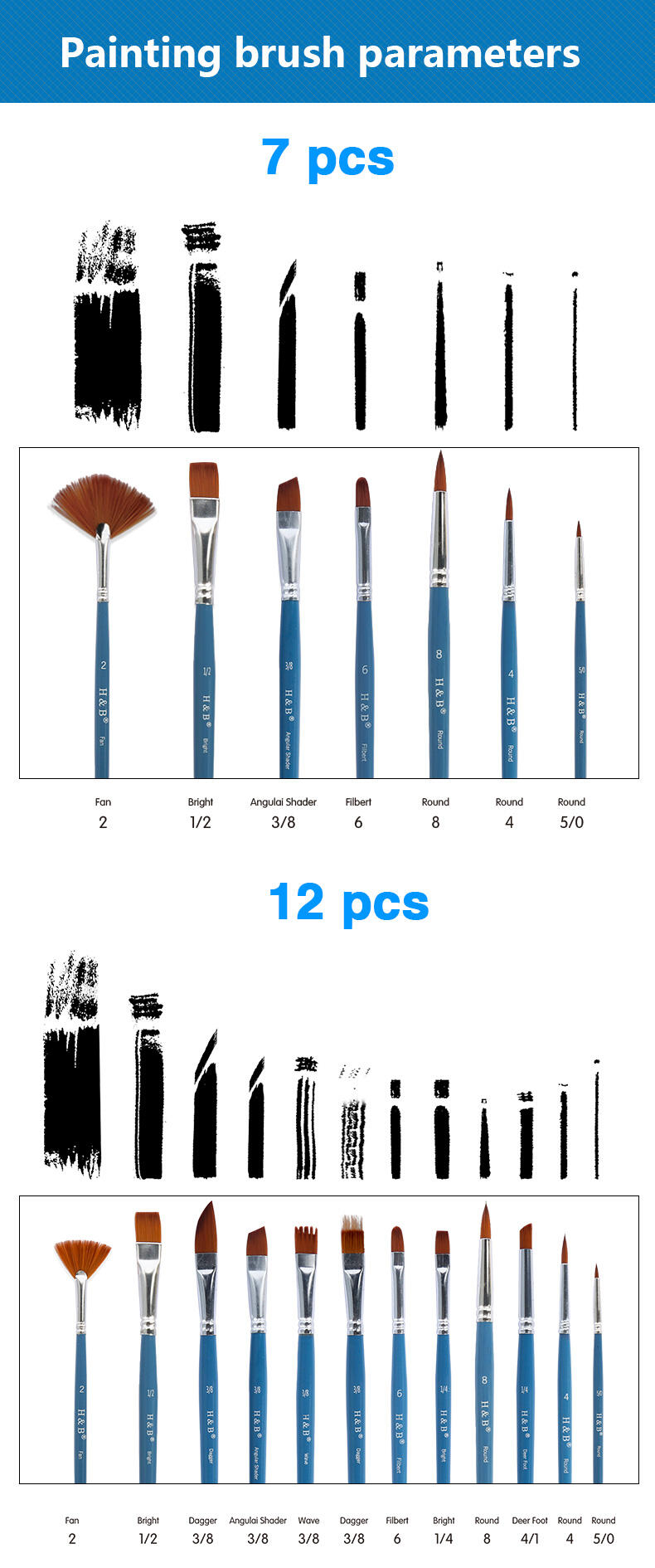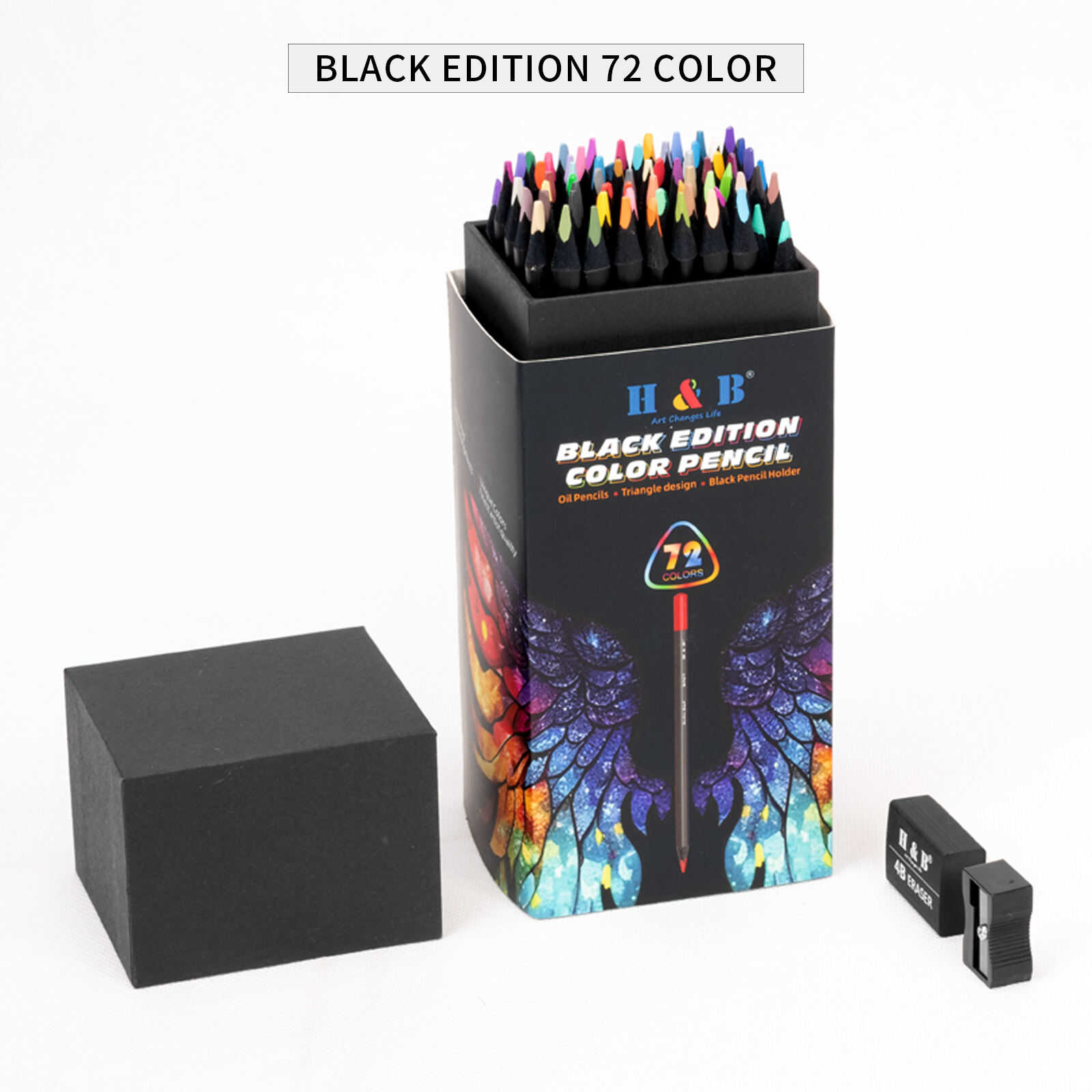Základné komponenty profesionálneho výkresového arzenálu
Každý umelec potrebuje správne nástroje na to, aby oživil svoju kreatívnu víziu, a komplexná sada štetcov na malovanie tvorí jadro každého seriózneho výkresového náradia. Bez ohľadu na to, či ste začínajúci umelcom alebo skúseným profesionálom, pochopenie rôznych typov štetcov a ich účelu môže výrazne rozšíriť vaše umelecké schopnosti. Dobre vybraná sada štetcov vám umožní dosiahnuť rozmanité techniky, textúry a efekty, ktoré povzniesu vašu tvorbu na novú úroveň.
Svet štetcov je obrovský a rozmanitý, pričom každý typ štetca plní špecifické funkcie, ktoré môžu výrazne ovplyvniť váš umelecký prejav. Od vytvárania širokých plynulých ťahov až po pridávanie najjemnejších detailov – správna kombinácia štetcov umožňuje umelcom s istotou čeliť akejkoľvek tvorivej výzve. Pozrime sa na základné typy štetcov, ktoré by mali byť súčasťou každej kompletnej sady štetcov.
Pochopenie materiálov a konštrukcie štetcov
Prírodné vs. syntetické vlákna
Základom každého kvalitného setu štetov je pochopenie materiálov štetov. Prírodné vlákna, zvyčajne vyrobené z vlasia zvierat ako sôvka, dobytček alebo ošípaná, sa výborne hodia na prácu s farbami na báze oleja. Tieto vlákna majú prirodzené rozdvojené konče, ktoré udržia viac farby a umožňujú hladšie ťahy. Prírodné štetce sú obľúbené najmä pre ich vynikajúcu schopnosť udržať farbu a vytvárať dokonalé prechody.
Syntetické vlákna, vyrobené z nylonu alebo polyesteru, veľmi prispeli k vývoju v posledných rokoch. Moderné syntetické štetce sa výborne správajú s akrylmi a akvareľmi. Vo vode si zachovávajú tvar lepšie ako prírodné vlákna a sú všeobecne odolnejšie a ľahšie čistiteľné. Kompletný set štetov by mal obsahovať aj prírodné, aj syntetické varianty, aby vyhovoval rôznym technikám a druhom farieb.
Kvalita rukoväte a svoriek štetca
Kvalita výroby štetca zohráva kľúčovú úlohu pri jeho výkone a životnosti. Nábrety vysokej triedy sú zvyčajne vyrobené z tvrdého dreva alebo bambusu, čo zabezpečuje vynikajúcu rovnováhu a pohodlie počas dlhších maľovacích sedení. Svorka, kovový prstenec, ktorý spája vlákna s nábreтом, by mala byť vyrobená z bezšvového, nehrdzavejúceho materiálu, pevne stlačeného, aby sa zabránilo uvoľneniu alebo vypadávaniu vlákien.
Pri výbere štietcov do súpravy štietcov si pozorne preštudujte ich konštrukciu. Hľadajte nábrety s pohodlným uchopením a vyváženým rozložením hmotnosti. Svorka by mala byť pevne pripevnená a vlákna by sa mali vrátiť do pôvodného tvaru, keď sú ohnuté. Kvalitná konštrukcia zabezpečí, že vaše štetce budú dlhodobo zachovávať svoj výkon a poskytovať konzistentné výsledky.
Základné tvary štietcov pre rôzne techniky
Okrúhle a ihlové štetce
Okruhové štetce sú pracovné kone každého setu farbičiek, ktoré ponúkajú všestrannosť pre široké ťahy aj presné detaily. Tieto štetce sa po zmáčaní zúžia na jemný hrot a dokážu vytvárať rôzne šírky čiar v závislosti od tlaku. Ostré okrúhle štetce majú dlhšie vlákna, ktoré udržia viac farby, čo ich robí ideálnymi na nepretržité ťahy a detailnú prácu.
Každý umelec by mal mať vo svojej zbierke niekoľko veľkostí okrúhlych štetcov. Väčšie štetce (veľkosti 8–12) sú ideálne na nátery a vyplňovanie plôch, zatiaľ čo menšie (veľkosti 0–4) vynikajú pri detailnej práci a tenkých čiarach. Vďaka svojej všestrannosti sú okrúhle štetce nevyhnutnou súčasťou kompletného setu farbičiek.
Ploché a krátke štetce
Ploché štetce majú priamočiare vlákna, ktoré vytvárajú presné a kontrolované ťahy. Vynikajú pri efektívnom pokrývaní veľkých plôch a tvorbe ostrých okrajov. Štetce typu bright sú podobné plochým, ale majú kratšie vlákna, čo zabezpečuje väčšiu kontrolu a pružnosť. Tieto štetce sú nevyhnutné na vymedzovanie tvarov, vytváranie rovných okrajov a nanášanie rovnomernej farby.
Pri výbere plochých a bright štetcov do sadby štetcov zahrňte rôzne šírky, aby ste vyhoveli rôznym potrebám maľovania. Široké ploché sú vynikajúce na pozadie a veľké plochy, zatiaľ čo užšie sú ideálne na stredne veľké tvary a kontrolované ťahy. Tuhosť týchto štetcov ich robí obzvlášť účinnými pri používaní hustších farieb.

Špeciálne štetce pre pokročilé techniky
Ventilátorové a uhlové štetce
Štetce s ventilátorom majú rozptýlené vlákna, ktoré vytvárajú jedinečné textúry a efekty. Sú vynikajúce na miešanie farieb, tvorbu jemných okrajov a maľovanie prírodných prvkov, ako sú oblaky, listovie alebo srst. Štetce s uhlom skosenia vlákien ponúkajú presnosť pri kreslení zakrivených čiar a v ťažko prístupných oblastiach. Tieto špeciálne štetce rozširujú možnosti vašej súpravy štetcov.
Hoci sa nepoužívajú tak často ako okrúhle alebo ploché štetce, špeciálne štetce otvárajú nové možnosti umeleckého vyjadrovania. Štetce s ventilátorom dokážu vytvoriť jemné prechody a perovité efekty, zatiaľ čo štetce s uhlom excelujú pri detailnej práci po okrajoch a v rohoch. Zahrnutie týchto štetcov do vašej súpravy zabezpečí, že budete pripravení na akúkoľvek umeleckú výzvu.
Filbert a mopové štetce
Štetce Filbert kombinujú vlastnosti plochých a okrúhlych štietcov, pričom majú zaoblené okraje, ktoré vytvárajú jemné, plynné ťahy. Sú obzvlášť užitočné na miešanie farieb a tvorbu organických tvarov. Štetce mop s ich objemným, zaobleným tvarom sú ideálne na premytie veľkých plôch a vytváranie jemných, atmosférických efektov.
Tieto špeciálne štetce pridávajú multifunkčnosť do súpravy štietcov, čo vám umožňuje dosiahnuť efekty, ktoré by bolo ťažké dosiahnuť bežnými tvarami štietcov. Filberty sú vynikajúce pre portrétnu prácu a prírodné tvary, zatiaľ čo mopy sa osvedčili pri vytváraní hladkých prechodov a premytí. Dostupnosť týchto možností rozširuje vaše umelecké možnosti.
Často kladené otázky
Koľko štietcov by mal obsahovať kompletný set štietcov?
Komplexný set štietcov zvyčajne obsahuje 12–15 štietcov, aby pokryl všetky základné techniky. Tento počet zvyčajne zahŕňa 3–4 okrúhle, 3–4 ploché a rôzne špeciálne štetce. Presný počet však závisí od vašich konkrétnych potrieb a uprednostňovaného štýlu maľovania.
Ako mám ošetrovať sadu štetov, aby vydržala čo najdlhšie?
Správna starostlivosť o štetky zahŕňa dôkladné vyčistenie štetov po každom použití, tvarovanie vlákien a uschovanie ich vzpriamene alebo vo vodorovnej polohe. Vyhnite sa nechávaniu štetov namočených vo vode alebo rozpúšťadlách a nikdy ich neuskladňujte smerom vlákien nadol, pretože to môže trvalo poškodiť tvar štetca.
Aký je najlepší spôsob, ako začať zbierať sadu štetov s ohľadom na rozpočet?
Začnite s kľúčovými tvarmi stredných veľkostí: niekoľko okrúhlych štetov, plochých štetov a jeden alebo dva špeciálne štetce. Na začiatku uprednostnite kvalitu pred množstvom a postupne rozširujte svoju zbierku podľa rastúcich potrieb. Najprv sa zamerajte na univerzálne štetce, ktoré dokážu slúžiť viacerým účelom.


